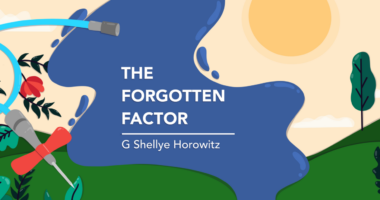The challenges and triumphs of factor self-infusion
Treating himself provides my husband with a rare sense of control

My husband, Jared, has been performing his factor infusions for his hemophilia B for over three years now. In that span of time, he’s learned so much — not just about veins, syringes, and technique, but also about his body and his limits.
Infusing factor IX has become more than just a medical routine. For Jared, it’s a skill he’s proud to call his own. While many people see it as just another part of life with hemophilia, Jared views it differently. He describes it as a kind of special ability, something that gives him a rare sense of control.
We’ve talked about the possibility of a cure. He says it would be life-changing and convenient. But he admits he’d miss the process. Not the pain or the bleeding — but the ritual. The familiar rhythm of doing something he’s mastered.
Every infusion is different
Over the years, Jared has developed techniques that work for him while infusing. But no two infusions are ever the same. Even his favorite veins don’t behave consistently. Some days, he strikes a vein on the first try. Other days, it takes several attempts — and that can be deeply frustrating.
Each attempt brings its own set of challenges:
- Missing a vein on the first try: It feels like a setback, especially when he starts the infusion with confidence.
- Veins that hide: Jared’s veins blend into his medium- to dark-brown skin, making them harder to spot. While he appreciates how his skin protects him from sunburn — unlike my porcelain tone that so easily burns — he often says he’d trade complexions with me if only during infusions. My veins stand out more clearly, which would make the process easier.
- Outdated equipment: Most of the factor Jared receives here in the Philippines comes from international donations. We’re incredibly grateful for them, but many of the supplies are old. Aging rubber seals can stick, allowing for less control during the infusion process.
These struggles don’t just make the process inconvenient. Sometimes, they stir up old emotions — grief from not being taught what he needed earlier in life. It’s painful to realize how much he had to figure out on his own.
Strength in the struggle
Even on the hardest days, Jared doesn’t quit. If something doesn’t go as planned, he pauses, takes a breath, and tries again. He keeps going until he gets it right.
That’s one of the things I admire most about him. He doesn’t just get the job done — he owns the entire process. He turns something painful into something powerful. Something that makes him feel strong.
Watching Jared infuse is like watching a quiet ceremony. Each movement is careful and deliberate. The task may be tough, but it reflects something beautiful: his choice to show up for himself again and again.
In that simple, steady act, I see courage in its purest form.
Note: Hemophilia News Today is strictly a news and information website about the disease. It does not provide medical advice, diagnosis, or treatment. This content is not intended to be a substitute for professional medical advice, diagnosis, or treatment. Always seek the advice of your physician or another qualified health provider with any questions you may have regarding a medical condition. Never disregard professional medical advice or delay in seeking it because of something you have read on this website. The opinions expressed in this column are not those of Hemophilia News Today or its parent company, Bionews, and are intended to spark discussion about issues pertaining to hemophilia.








Leave a comment
Fill in the required fields to post. Your email address will not be published.